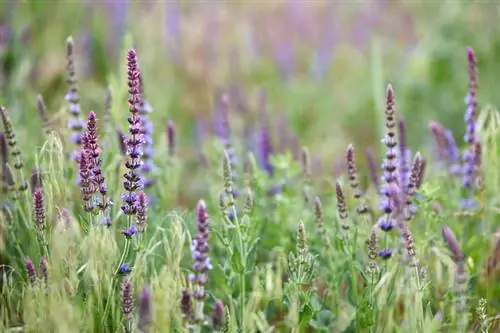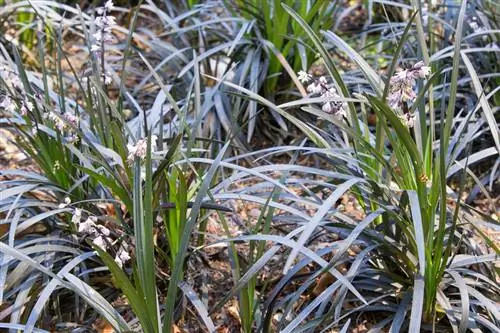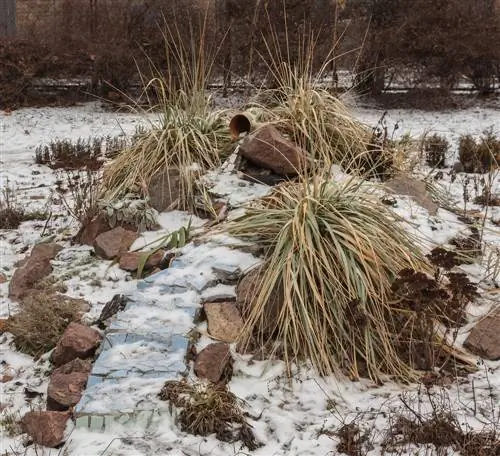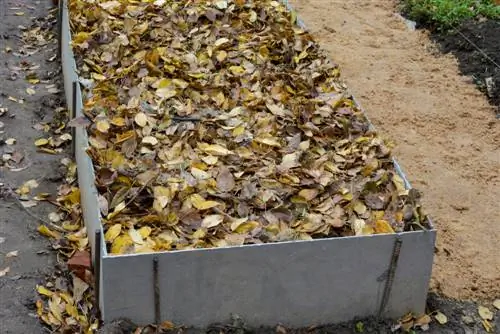- Author admin [email protected].
- Public 2023-12-16 16:46.
- Last modified 2025-06-01 06:02.
Fall is a busy time for home gardeners. Now is not the best time for planting perennials, shrubs and trees. With winter approaching, important preparatory work is on the agenda. Find out here how you can make your garden winter-proof with just a few precautions.

Preparing the bed for winter - this is how it works
In mid-October to early November, almost all the plants in the bed have stopped growing. Now is the best time to prepare the soil and the rootstocks in it for the cold season. Freshly planted trees and wintergreen plants are also prepared for frost and snow. These works are in focus:
- Collect ripe seeds for propagation by sowing
- Cut herbaceous perennials close to the ground
- Dig up and put away frost-sensitive tubers, such as dahlias
- The shoots of freshly planted trees are covered with fleece
- Binding ornamental grasses into a knot
- Wrap tree trunks with jute or bamboo mats to protect against frost cracks
In ornamental and kitchen gardens, it is recommended that you cover the soil with a layer of leaves and brushwood. In this way, you naturally protect the overwintering root balls from excessive moisture and severe frost.
Preparing your lawn for the cold season - this is important now
Pay special attention to your lawn in autumn so that the green area is prepared for the strenuous winter. These precautions are important now:
- Sweep the leaves weekly
- Remove fallen fruit and fruit mummies promptly
- Mow the lawn for the last time after the first frost
By applying a potassium-rich fall lawn fertilizer in September, you will strengthen the winter hardiness of each individual blade of grass.
Put away the bucket or equip it with a winter coat - this is how it works
If the thermometer falls below 10 degrees, it's time to put away non-hardy potted plants. The vast majority prefer a frost-free, bright winter quarters with temperatures between 5 and 10 degrees Celsius. Only deciduous plant species tolerate a dark, cool room. All frost-hardy potted plants receive protection before the onset of winter because their root ball is in a vulnerable position. How to do it right:
- Push the bucket in front of the south wall of the house or move it into a niche protected from wind and rain
- Place a block of wood under each container to protect against frost from the ground
- Wrap a pot several times with bubble wrap or jute ribbons
- Cover the substrate with leaves, straw, sawdust or compost
Please always put away pots with a diameter of less than 30 cm, as the small substrate volume means that reliable protection against frostbite is not possible, even for hardy plant species.
Tip
When pruning trees, you can safely wait until the leaves have completely fallen off. The best time for shape and maintenance pruning is on a frost-free, overcast day in late winter. At this point, thanks to the leafless branches, you have the best overview to make a professional decision about the right cut.






